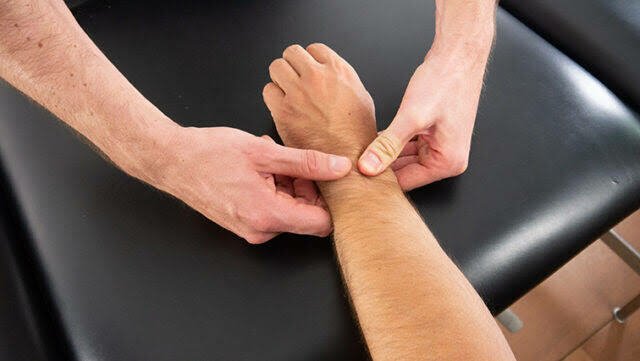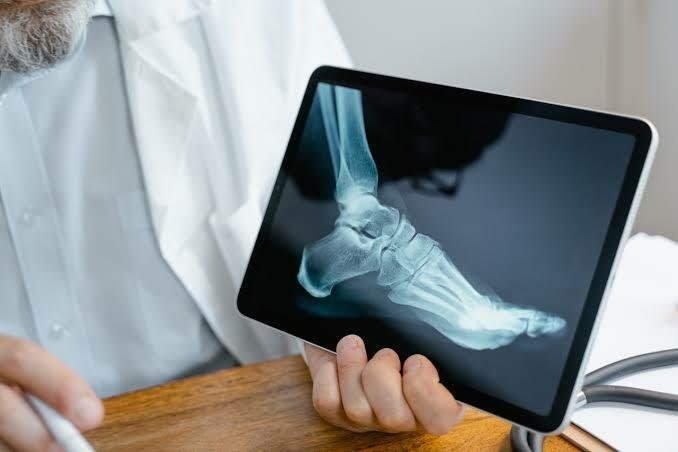Physiotherapy after fractureWhen you or a loved one gets a fracture, you want the best recovery. In Australia, physiotherapy is key for getting back on your feet. Our skilled physiotherapists offer custom care to help you through fracture recovery
Our clinics know the challenges of fracture recovery. We use top-notch assessment, tailored plans, and the latest rehab methods. This helps you reach your goals and get back to your daily life and sports confidently.
Key Takeaways
- Physiotherapy is essential for optimal recovery after a fracture in Australia
- Our experienced clinicians provide personalised care to address individual needs
- Advanced assessment and treatment techniques are used to accelerate healing
- Tailored rehabilitation programs are designed to restore strength, flexibility, and function
- Our goal is to help you regain your independence and return to an active lifestyle
Understanding Fracture Recovery and Rehabilitation in Australia
Recovering from a fracture is a tough journey. But, with the help of professional physiotherapists in Australia, patients can get back to their normal lives. Knowing about the different types of fractures and how they affect recovery is key.
Types of Fractures and Their Impact on Recovery
Fractures can range from simple breaks to complex injuries. The severity and location of the fracture greatly affect recovery time and treatment. For example, a simple break in a long bone might need a different approach than a complex fracture in a joint.
The Role of Professional Physiotherapy in Healing
Physiotherapists are crucial in helping patients heal after a fracture. They create personalized plans that include bone healing exercises, post-fracture mobility, and fracture recovery physiotherapy. Using non-surgical fracture treatment methods, they help patients regain strength and mobility, aiding in a successful recovery.
Initial Assessment and Treatment Planning
The first step in rehabilitation is a thorough assessment by a physiotherapist. They check the injury’s extent, the patient’s health, and any conditions that might affect recovery. Based on this, they create a treatment plan that focuses on pain, mobility, and rehabilitation.
“Physiotherapy is essential in helping patients regain their pre-injury level of function and independence after a fracture. Our team works closely with each patient to ensure a safe and effective recovery journey.”
Physiotherapy After Fracture: Essential Treatment Protocols
Recovering from a fracture needs a detailed physiotherapy plan. This plan aims to improve mobility, function, and manage pain. In Australia, physiotherapists follow key treatment protocols for fracture rehabilitation.
Early Mobilisation Techniques

In the first stages of recovery, the focus is on gentle movements. Physiotherapists help patients find safe, low-impact exercises. These exercises help avoid muscle loss and joint stiffness, making the recovery process more efficient.
Pain Management and Movement Strategies
Pain from fractures can slow down recovery. Physiotherapists in Australia use various pain management methods. They apply ice, heat, and prescribe gentle exercises to help manage pain. This allows patients to start moving and exercising again.
Progressive Exercise Implementation
When the fracture heals and pain lessens, physiotherapists introduce more challenging exercises. These exercises are tailored to the patient’s needs and recovery stage. They focus on strengthening, balance, and restoring lost function, adjusting the program as needed.
Physiotherapy for fractures in Australia combines early mobilisation, pain management, and progressive exercises. This approach helps meet each patient’s unique needs, ensuring a successful and lasting recovery.
Specialised Rehabilitation Techniques for Different Fracture Types
In Australia, our fracture physiotherapy experts use special techniques for each fracture type. These methods help us restore mobility and support the recovery journey of our patients.
Upper limb fractures need careful bone fracture management. We use manual therapy and exercises to improve range of motion and strength. On the other hand, lower limb fractures focus on weight-bearing and gait training to improve mobility.
- For upper limb fractures, like shoulder, elbow, and wrist, we use:
- Manual therapy to improve joint mobility
- Targeted exercises to rebuild strength and coordination
- Adaptations for daily activities
- Lower limb fractures, including femur, tibia, and ankle, get:
- Progressive weight-bearing exercises
- Gait training and balance rehabilitation
- Customised bracing or assistive devices, if necessary
Our fracture physiotherapy techniques help patients move smoothly from immobilisation to full mobility. We tailor our care to meet each patient’s needs, aiming for a full recovery and return to activities.
“Our specialised approach to fracture rehabilitation ensures that each patient receives tailored care, empowering them to regain their mobility and independence.”
– Jane Doe, Lead Physiotherapist
Recovery Timeline and Milestones in Fracture Rehabilitation
Recovering from a fracture is a journey that needs patience, dedication, and the help of skilled physiotherapists. In Australia, a detailed fracture recovery program guides patients through healing phases. It ensures a safe and successful return to daily life and sports.
Phase-by-Phase Recovery Guidelines
The fracture recovery program is split into clear phases, each with its own goals and treatments. These phases include:
- Immobilisation and pain management: Right after the injury, the affected limb is kept still to help it heal and avoid more damage. Physiotherapists help manage pain and discomfort during this key stage.
- Gradual mobilisation and strengthening: As healing starts, physiotherapists introduce exercises to improve mobility and muscle strength.
- Functional rehabilitation: Next, the focus is on getting back to daily activities like walking and doing basic tasks.
- Return to sports and recreation: Finally, the physiotherapist creates a plan for safely returning to sports and fun activities.
Monitoring Progress and Adjusting Treatment
Physiotherapists keep a close eye on the patient’s progress and adjust the treatment as needed. This includes regular checks, joint tests, and strength evaluations to keep the program effective and tailored to the patient’s needs.
Return to Daily Activities and Sports
The main goal of fracture rehabilitation is to help patients regain their independence and reach their pre-injury fitness level. Physiotherapists help develop a gradual plan for returning to daily tasks and sports, ensuring a safe and successful transition.
| Recovery Milestone | Typical Timeframe |
|---|---|
| Limb immobilisation and pain management | 2-6 weeks |
| Gradual mobilisation and strengthening | 6-12 weeks |
| Functional rehabilitation | 12-24 weeks |
| Return to sports and recreation | 6 months or more |
By sticking to a structured fracture recovery program and working with experienced physiotherapists, patients in Australia can confidently recover. They can then regain their active lifestyles.
Conclusion
In Australia, physiotherapy after a fracture is key. It involves professional care and treatment plans tailored to each person. The patient’s effort in the recovery process is also vital.
Understanding the types of fractures and their effects on recovery is important. Specialised techniques help with different fractures. This ensures the best results.
Using range of motion exercises and weight-bearing activities helps a lot. Pain management strategies and falls prevention education are also crucial. These steps help people regain their strength and confidence.
The path to full recovery can be tough. But with the help of skilled physiotherapists and the patient’s hard work, Australians can get back to their active lives.
We urge all Australians who have had a fracture to focus on their rehabilitation. Working closely with their physiotherapy team is essential. By following the care and approach discussed, we can support each other’s healing. This way, we can help our fellow Australians regain their independence and quality of life.







